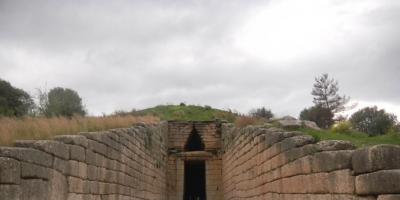Like any other resource on the planet, soil is depleted over time. To prevent the loss of soil fertility on their plots, gardeners resort to various tricks - introducing organic fertilizers, introduce innovative plowing methods and study the basics of proper soil green manure. The last event is worth paying attention to Special attention, because timely use of green manure makes it possible to achieve optimal conditions for growing common crops.
Green manure is the sowing of a certain category of plants into the soil, the seedlings of which are subsequently dug up and left to be incorporated into the soil. The positive aspects of using green manure can be represented by the following list:

- control over the growth of weeds on the site;
- enrichment of the soil with nitrogen;
- the possibility of improving water permeability and soil aeration;
- protecting the soil on the site from blowing out and washing away during bad weather;
- increase in soil microbial activity;
- preventing the formation of erosion;
- achieving optimal soil structure.
It will be useful for novice gardeners to read the article. Can be used as green manure various plants, forming good root canals in the soil and having succulent, dense tops. For example, white mustard as a green manure has an excellent reputation among gardeners. This plant helps reduce soil alkalinity and achieve maximum comfortable conditions for growing vegetables and fruits in the garden. In addition, white mustard, as green manure, kills fungi in the fall and protects crops from pests and diseases. How to properly sow mustard on green manure will be discussed in this review. The article will also provide information on when to dig up green manure and how to determine the rate of mustard seeds per hectare of land.
Beginning summer residents and experienced vegetable growers are well aware of white mustard as green manure; not everyone knows when to sow this plant in the fall, since in the specialized literature on agriculture Various recommendations are given. In most cases, agronomists who in their publications give advice on when to sow white mustard as green manure, they agree on the timing of planting this crop. They consider the optimal time to plant this crop autumn period.
The exact timing of sowing seeds depends on the type of crops growing on the site.
 For example, after potatoes, white mustard is planted as green manure in the fall in early September. If the site grew early varieties vegetables, then mustard seeds can be planted into the soil immediately after the summer harvest - at the end of July or at the beginning of August. By devoting just a few hours to sowing a plot of land with mustard seeds in the fall, the gardener will be able to return to the plot in the spring and make sure that the soil is sufficiently fertilized and structured.
For example, after potatoes, white mustard is planted as green manure in the fall in early September. If the site grew early varieties vegetables, then mustard seeds can be planted into the soil immediately after the summer harvest - at the end of July or at the beginning of August. By devoting just a few hours to sowing a plot of land with mustard seeds in the fall, the gardener will be able to return to the plot in the spring and make sure that the soil is sufficiently fertilized and structured.
While studying the topic of how to sow white mustard under green manure, some summer residents find information about planting seeds in spring. This option also deserves separate consideration. Spring planting gives good results, and summer residents who did not have time to plant mustard seeds in the fall will be able to forget about the hassle associated with fertilizing the land if they take the time in March to plant green manure into the soil.
Thus, there are different times for sowing white mustard green manure in a summer cottage. In particular, this crop can be planted in the ground, both in autumn and in spring period time. By planting green manure to kill weeds in the fall and adding mustard seeds to the soil in the spring to improve soil fertility, gardeners will be able to achieve excellent yields and high quality vegetables and fruits.
The specialized literature describes in detail how to use white mustard as green manure in the fall, and what to do to ensure that spring sowing of this crop gives the expected result, so gardeners should study books on agriculture to gain deeper knowledge in this area. You can also find out how and what kind of green manure is best to plant in the fall.
Features of using white mustard for green manure
Gardeners simply need to throw a few handfuls of white mustard into the soil in order to see the results of their labor next season. This green manure very quickly affects the quality of the soil and its composition. Thus, low-growing white mustard greens help inhibit the growth of weeds and retain moisture in the ground. By improving the aeration and water permeability of the soil, the fertile layer receives an optimal dose of nutrients. Mustard roots improve the mechanical structure of the soil, so in the future it will be easier to weed and cultivate the soil using specialized agricultural equipment.
 The advantages of white mustard over other green manures can be represented by the following list:
The advantages of white mustard over other green manures can be represented by the following list:
- crop resistance to drought;
- the possibility of growing green manure in most regions of central Russia;
- compatibility of green manure with various types of soil (mustard will give excellent seedlings both on black soil and on heavy clay soils);
- high tolerance of seeds to low temperatures.
Among the disadvantages, it is worth noting the high cost of seeds and the possibility of damage to young seedlings during prolonged spring frosts. In addition to finding out the positive and negative aspects various types green manure crops, many summer residents are looking for an answer to the question of when to dig up green manure crops - in the fall or spring for best result. This issue will be covered in the next section.
Features of calculating seed rates and digging green manure
Each plot differs in size and area of cultivated land. Therefore, the number of green manure per hundred square meters is calculated by gardeners individually.
On average, about two hundred grams of white mustard seeds need to be prepared per one hundred square meters of land.
This rate can be reduced or increased depending on the degree of soil depletion, its structure and type. After the gardener determines optimal rate green manure for one hundred square meters of his plot, he will ask another important question - is it necessary to dig up the soil after green manure or prefer no-till farming to digging?  You can answer the question of when to dig up green manure after reading the recommendations of leading agronomists. So, most experts advise simply using a rake and leveling the mustard tops on the ground within two months after planting. In this case, the green manure will simply settle in the soil and soon rot.
You can answer the question of when to dig up green manure after reading the recommendations of leading agronomists. So, most experts advise simply using a rake and leveling the mustard tops on the ground within two months after planting. In this case, the green manure will simply settle in the soil and soon rot.
If the gardener decides to use a shovel to better structure the soil, then he is interested in the question of when to dig up white mustard as green manure for optimal results. The answer to the question of when to harvest white mustard as green manure depends on the time of planting the seeds. As a rule, experts advise waiting until the crop blooms, which occurs 30-40 days after planting the seeds, and only then start digging.
Green manure planting technology
Each summer resident will be able to plant mustard seeds on his own plot - this green manure does not require special care and does not require compliance with any complex land cultivation procedures. Sowing is done manually, and seeds should be planted in the ground using a rake. With the simplest garden tools and a few hours of free time, gardeners will be able to independently master the cultivation of “green fertilizers” on their plots.
 To achieve optimal seedlings, it is recommended to follow some rules:
To achieve optimal seedlings, it is recommended to follow some rules:
- the planting depth should be two to three centimeters;
- fresh crops should be covered for three to four days plastic film to obtain quick shoots;
- Irrigation of crops must be done using the gentle “sprinkling” method.
As you can see, the agricultural technology of white mustard green manure is simple and accessible, so vegetable growers with any skill level can grow this crop.
Compatibility of white mustard with various garden crops
From this review, gardeners were able to gain knowledge on how to use mustard as green manure in organic farming. However, they should not miss important point, namely, the compatibility of this green manure with other crops. To understand this issue, it is necessary to study the properties of “friendly” and “hostile” neighbors for white mustard sprouts.
 This green manure should not be used to fertilize the soil on which the following crops grew:
This green manure should not be used to fertilize the soil on which the following crops grew:
- radish;
- rape;
- radish;
- other cruciferous plants.
These “neighbors” are undesirable for white mustard seedlings, since growing them together in one area will lead to the accumulation of pests in the soil (cruciferous plants and white mustard have a common spectrum of diseases). When sowing white mustard after harvesting crops such as cucumbers, tomatoes, eggplants, potatoes, etc., the summer resident, on the contrary, will be able to prevent the spread of pests on the site and improve the quality of the soil. More information about which green manures to sow under which crops to achieve maximum yield can be found.

Compatibility of green manure with various vegetable crops
Sideration summer cottage is one of the cornerstones of modern organic farming. As proof of this thesis, one can cite a lot of positive aspects that the use of white mustard green manure gives, for example, it guarantees the achievement of an optimal soil composition, free from artificial fertilizers with an aggressive composition. It helps saturate the soil with humus and allows summer residents to grow surprisingly tasty and healthy crops. Growing green manure on your own plot, which is also called “green manure,” will allow gardeners to extract maximum resources from the garden and maintain the ecological balance on the planet.
It's time to remove late vegetables and send them for storage. White green mustard should be sown as soon as potatoes and other vegetables are harvested; it is an excellent green fertilizer for tired soil.
- Application
- Contraindications
- Reviews and comments
When and why to sow white mustard as green manure?
- First of all, after splitting in the ground, the plant biomass will become an easily digestible fertilizer, and the soil will be replenished with humus and organic matter. In cultivated soil, white mustard suppresses the development of weeds and fights them. Culture actively heals and nourishes the earth;
- Because of the essential oils it contains, the plant serves as a preventative against the accumulation of pests: for example, slugs, pea moths and wireworms. And also fungal infectious diseases: for example, potato scab and rhizoctonia;
- For the soil, mustard serves as a fertilizer, improves and enhances the living environment of soil microorganisms and worms, and, when decomposed, serves as food for them. This results in high yields;
- since mustard is a plant of the cruciferous family, it is used not only as a fertilizer, but is a honey crop. The plant is valued for its rapid growth and the accumulation of large masses in a short cold period. When the plant blooms, it attracts beneficial insects;
- after decomposition in the soil, it is a highly digestible fertilizer, but is inferior to legume green manure in the presence of nitrogen, therefore, as green manure, mustard will be more effective when mixed with legumes;
- white mustard - green manure perfectly structures, loosens and drains the soil, thereby increasing its moisture capacity and breathability. The roots of the plant penetrate deep into the ground, up to three meters deep. This crop is intended to protect the land from wind and water erosion in spring and autumn, and if the plant is not removed, then also in winter;
- the plant is able to retain snow, which leads to less freezing of the ground and greater accumulation of liquid;
- white mustard crops can be given to rabbits, cattle and other animals. In terms of nutritional values, the plant is not inferior to compound feed, and is valued for a large number of protein in the fall. Young and not yet blooming greens can be given to rabbits and not be afraid that they may get sick. Its significant drawback is the absence of many biologically active substances, vitamins, as well as the presence of toxic glucosides and oil. The older the plant gets, the more harmful it becomes;
- crop is sown in early spring 30 days before planting potatoes. It is not recommended to sow cabbage at the planting site, because these mustard and cabbage are from the cruciferous family. Also a good period for sowing is in the fall until mid-September, in the spring you can sow until the end of April;

- crops germinate in three to four days. For feed and green fertilizer, up to 150 g per hundred square meters are sown in rows. It is recommended to leave a width of 15-20 cm between the rows. When sowing seeds manually, or on the 20th of August, up to 400 g are used. For honey collection and obtaining seeds, they are sown in rows;
- White mustard seeds are sown when the potatoes are completely harvested. It is recommended to sow immediately after harvesting the main crop. This will prevent the loss of shadow moisture and prevent the soil from drying out.
When is white mustard green manure harvested?
- After one and a half months after sowing, the plant reaches 15-20 cm. It is mowed or pruned (as convenient for you), watered in advance with a solution of em-preparations. Thanks to a special solution, the fermentation process is accelerated and a favorable microbiological condition is created, which leads to the enrichment of the earth with microelements and nutrients.
Particular attention should be paid to the climatic conditions in which the land plot. The fact is that the processes of decay and humification take place only with an abundant water supply. If your site is located in an arid region, then green manure will be effective with abundant watering. If your region experiences periodic droughts, then watering should only be done during droughts.
Application
- Mustard essential oil used to prevent colds. For hypothermia, mustard powder is used. Used as a rub for sore joints and inflammation of the sciatic nerve. Helps well with otitis media and toothaches;
- used to cleanse the skin, it can be used to eliminate bruises, bruises and contusions. It prevents the process of rotting and fermentation. Regular consumption of it helps to reduce weight because it contains a substance that breaks down fats;

- Ready-made white mustard is used in masks to accelerate hair growth and also prevent hair loss. If there is increased oiliness at the hair roots, it is recommended to use masks containing mustard powder;
- used for preventive purposes in cardiovascular diseases;
- mustard powder is widely used in everyday life as detergent for dishes;
- V folk medicine Mustard seeds are recommended for heartburn and gastritis. Seeds are taken in a course of one grain per day, increasing the number of grains daily to 20 pieces, after the grain they are consumed in the reverse order;
- widely used in cooking, the grains are used to prepare sauces, pastes and mustard oil. Mustard powder is an integral part of various mayonnaises. It is used more as a seasoning in cooking. meat dishes and offal dishes.
Contraindications
It is not recommended to consume and use mustard if you have lung disease (tuberculosis), kidney inflammation, high acidity, peptic ulcer stomach and gastritis. People with allergic diseases and those prone to them. If you have varicose veins, it is not recommended to do foot baths at all.
The use of mustard plasters is contraindicated for pustular skin diseases, psoriasis, terry eczema and hemorrhagic strokes. It is strictly prohibited to give it to children under 2 years of age.
Mustard is a plant known to most people as a raw material for the production of the seasoning of the same name, which has a specific taste and smell. It is widely used in cooking, as well as in medicine in the form of a warming powder.
But not everyone knows that it can be grown. But mustard as a fertilizer is good for the garden. The properties of the plant to heal and saturate the soil with useful substances have long been used by residents of the Balkan countries, whose climate is very similar to the climate of the middle zone.
Article outline
Properties and composition of mustard
Mustard is called Sinapis in Latin and is botanically a member of the cabbage family. Its genus includes 6 species, of which the most useful as a soil fertilizer is White mustard (Sinapis alba). Its second name, less common, is English. It received its first name from the color of its seeds. In the CIS countries it is widespread except in the northern regions; in some areas it is known as a weed that grows along roads and in fields.
Her beneficial features To improve the soil, they specifically involve releasing poorly soluble phosphates and other substances from the soil and accumulating them in their green mass. Other crops cannot assimilate them on their own. But after the mustard is mowed and rots in the soil, other plants can obtain poorly soluble substances in an easy form for themselves. This is what makes mustard an effective fertilizer in the form of green manure.
Green manure is an agricultural term for plants that are grown for the purpose of incorporating them into the soil. In addition to mustard, lupine and other legumes, amaranth, buckwheat, and winter cereals are also used. Another “popular” name is green fertilizers.
Another useful property of white mustard is the ability to accumulate nitrogen in its roots, stems and leaves in large quantities, which will later be used for growth garden plantings. The plant is rich in phosphorus. After the green mass of mustard is mowed and falls into the soil, the earth is saturated with many useful micro- and macroelements necessary for other future plantings in this place and obtaining a rich harvest.
Mustard leaves that fall into the soil contain:
- 25% organic matter;
- 0.9% phosphorus;
- 0.7% nitrogen.
White mustard, used as green manure, has whole line advantages over other green manures. Its seeds germinate very quickly - a maximum of 4 days will pass from planting to the appearance of the first shoots. However, warm weather is not a prerequisite. Even a temperature of 0°C will not prevent mustard shoots. The young shoots themselves can withstand frosts down to -5°C, so white mustard is often planted in early spring or autumn. Plus to everything - high yield. It is estimated that about 400 kg of green mass can be collected from one hundred square meters.

When sowing mustard for fertilizer, you need to take into account that its seeds should not be allowed to ripen.- this will lead to uncontrolled spread of the plant throughout the area. This applies not only to spring planting, but also for autumn. White mustard grows quite quickly, and often manages to bloom before the onset of winter. subzero temperatures. True, in the latter case there is no need to mow the green part. During the winter, frost will successfully destroy its leaves, and the elastic stems will act as a snow retainer. The roots will retain moisture in the soil.
Due to its increased growth and large volumes of green mass, mustard is used as a barrier against air flow in areas where strong winds blow. This promotes moisture retention in upper layers soil, prevents its weathering and protects planted plants. True, due to the rapid reproduction of mustard, in this case it is necessary to mow it before it blooms, and replant the crop in the same place. The roots will further strengthen the soil, and the green part can be used for fertilizing.
How to cut mustard with a walk-behind tractor
 Unfortunately, in Russia and other CIS countries, white mustard has not gained popularity among gardeners and gardeners. In many ways, the skeptical opinion regarding the cultivation of this plant has developed due to the misconception that it is heat-loving and the climate of the middle zone is not suitable for white mustard.
Unfortunately, in Russia and other CIS countries, white mustard has not gained popularity among gardeners and gardeners. In many ways, the skeptical opinion regarding the cultivation of this plant has developed due to the misconception that it is heat-loving and the climate of the middle zone is not suitable for white mustard.
But this statement is completely wrong. She is not only undemanding temperature conditions and watering, but is also a quickly spreading weed if its seeds have time to ripen. In the wild it is found in all climatic zones with the exception of permafrost. White mustard is found all over the world: for example, in America, India and Japan.
Those gardeners who have already used white mustard as a fertilizer can confirm its unpretentiousness and effectiveness.
Mustard fertilizer - what you need to know
Fertilizing the soil with mustard allows you not only to fill the soil with nutrients, but also performs a number of additional functions.
Advantages of mustard:

At the same time, mustard is good not only as a future fertilizer for the garden. Its white flowers are an attractive honey plant for bees and other pollinating insects. This information may be useful topics who has his own apiary.
White mustard is also good as a companion plant. It is often planted around fruit trees and berry bushes. It will not only repel many pests, but will also contribute to better pollination of flowers. For this purpose, you can take a small handful of seeds and plant it near an apple tree, raspberry or strawberry tree.
Disadvantages of mustard
But still, mustard as a green manure has some disadvantages that should not be forgotten when planting it.
- White mustard, which belongs to the Cruciferous family, has general diseases and pests with other representatives of this family. Therefore, you need to follow the rules of crop rotation. In the area where mustard grew and nearby, you should not plant other cruciferous vegetables, such as cabbage or radishes.
- The seeds of this crop, scattered over the surface of the soil and covered only with a thin layer of soil, are very attractive to birds, which can peck all the scattered seeds. planting material. To prevent this, you should deepen the seeds into the soil or carefully sprinkle them with mulch for the winter.
White mustard objectively has much more advantages than disadvantages. You can fully appreciate its effectiveness only by trying to plant it on your site.
Time to board
Gardeners name two periods when mustard should be sown as a fertilizer. This is mid-spring and autumn, when the harvest has already been harvested. It should be taken into account that this plant will gain optimal weight at least a month after its seeds enter the soil.
Fertilizing the garden with mustard in spring
In spring, mustard as a fertilizer is best planted in April. Even in middle lane climatic conditions are already suitable for this. The sun is already sufficiently warming the soil, and severe night frosts are becoming rare. Although this plant is extremely undemanding to environmental factors, it is still worth waiting until the air temperature warms up to 10°C.
It will take 1–2 months for the plant to gain green mass, which will then be used as fertilizer, depending on the conditions. environment. If you sow in April, you can have time to improve the soil before planting the main garden crops.
 When the entire harvest has already been harvested, a new time comes for sowing white mustard as green manure. In the remaining time before the onset of cold weather, it will have time not only to grow, but, possibly, to bloom.
When the entire harvest has already been harvested, a new time comes for sowing white mustard as green manure. In the remaining time before the onset of cold weather, it will have time not only to grow, but, possibly, to bloom.
Mustard is planted in the fall mainly in those areas that have been planted cereal crops or potatoes. Thanks to this, the soil, from which a large amount of useful substances were absorbed, is again saturated with them and becomes healthier. Next year it will be possible to grow a rich harvest on it again.
Mustard is often used as a fertilizer before winter, leaving it unmown. Over the winter most of will have time to rot and saturate the soil, and the trunks will protect the soil from freezing. And in order for mustard to enter in the spring, you need to choose the right planting time. Seeds should be planted in already cool but loosened soil. To do this, it can be processed with a rake or pitchfork. To prevent melt water from washing away the grains with the onset of spring, they should be deepened by 1–2 cm.
Video about mustard and other natural fertilizers
Methods of planting seeds
White mustard grows best on fertile, soddy-podzolic soils. Sandy loam soil containing peat is also suitable for it. But the list of soils most unloved by mustard includes acidic and clayey soils, as well as saline soils. Although mustard is not a capricious plant at all, it loves moisture and a sufficient amount sunlight. She needs a particularly large amount of water at the time when she is gaining buds.
There are two main ways to plant mustard seeds:
- The first method involves embedding grains in the ground to a depth of 1.5–2 centimeters, leaving a distance between plantings of 13–15 cm. However, it is not necessary to follow the latter rule - mustard, characterized by lush growth, will certainly create a lush green carpet in the area allocated to it. The consumption of mustard seeds, which are used as fertilizers, is approximately 150 grams per 1 hectare.
- The second method is simpler. The seeds are scattered in handfuls over the surface of the ground and then covered with a thin layer of soil using harrowing. But you need to take into account that in this case you will need approximately twice as much seeds.
It is better to buy mustard seeds for planting in specialized stores. It is necessary to carefully check their quality: they must be dense, without signs of drying out or rotting.
This will guarantee that within a few days green sprouts will appear on the soil, and in a month the mustard will be ready for further use.
What to do next with mustard?
After the plants have gained a sufficient amount of green mass, it should be incorporated into the soil, unless we are talking about planting before winter. Gardeners claim that such fertilizing with mustard gives positive results, which can be assessed very soon. The main thing is to make sure that the plants do not have time to bloom, otherwise the stems will become too rough and additional effort will be needed.
One of the advantages of embedding mustard stems and leaves is that it is easy to incorporate into the soil: it happens in the same place where it grew. No additional transportation required. It is enough to embed it into the ground with a shovel, hoe or hoe. To speed up the process of its processing in the soil, you can additionally spill it with a solution containing microorganisms (for example, “”). Similar procedures are repeated if mustard as a fertilizer was planted in the fall for the winter.
Using white mustard as a fertilizer allows you to fill the soil with nutrients and improve its overall health. But we must remember that each plant absorbs and then releases back into the soil only a limited list of elements. Therefore, unfortunately, it will not be possible to achieve soil with an ideal composition by planting this plant.
It is better to use several green manures, selected taking into account their characteristics. Do not forget about other types of fertilizing - careful attention to the quality of the soil will be the key to a large harvest.
Organic farming allows you to grow cultivated plants without the use of chemical fertilizers, which can negatively affect human health. One of the most common plants for fertilizer is white mustard as green manure. It allows you to improve the quality of the soil and obtain nutritious vermicompost, which will be suitable for all crops.
The benefits of white mustard as a soil fertilizer
The aboveground and underground parts of the plant during the process of decay can form up to 400 kg of useful organic compounds per 1 hectare. As a result, due to the high enrichment of the soil with organic matter, it is possible to achieve maximum yield without using additional fertilizers.
The main benefits of white mustard are as follows:
- prevention of nitrogen leaching from the soil;
- enrichment of the soil with phosphorus, potassium and nitrogen during the decomposition of green mass and the underground part of mustard;
- the rapid growth of the plant prevents the development of weeds, suppressing them in competition for sunlight;
- essential oils in the plant prevent the development of many pathogenic bacteria and fungi, and also reduce the number of pests on the site, both underground and aboveground;
- The taproot, penetrating to a depth of 3 meters, increases soil ventilation and makes it looser.
If you do not mow the plants for the winter, the stems, which are up to 70 cm high, form a dense cover on the soil that will protect the soil from weathering. Thanks to this, the soil will retain the moisture that plants need in the spring.
Using white mustard as green manure
The use of white mustard as green manure is associated with a number of plant properties that make this green fertilizer the most convenient for growing. After embedding, when mustard greens are dug into the soil, the soil is enriched with organic matter and mineral compounds, which the plant actively releases when rotting. As a result, other crops growing after mustard receive high-quality nutrition and a powerful impetus for active growth.

- White mustard is highly cold-resistant and can withstand temperatures of -5 degrees.
- Culture has distinctive properties, slightly complicating agricultural technology.
Mustard is a cruciferous plant and is affected by many diseases. Because of this, it is important to remember that plants of this family cannot be sown immediately after it.
Today, farmers widely use white mustard as green manure. With its help, you can enrich the soil, supply it with nutritious minerals, and also increase fertility.
Green manures are natural fertilizers that are very useful and effective for enriching the soil.
General description and features
 Often used as a natural fertilizer annual plants, which can increase green mass over the season. This number includes white mustard. In addition, it is used in medicine, as well as in cooking.
Often used as a natural fertilizer annual plants, which can increase green mass over the season. This number includes white mustard. In addition, it is used in medicine, as well as in cooking.
White mustard is a common annual plant. During the season it can grow one meter high, which explains its popularity as a green manure. In addition, the crop is a wonderful honey plant. If it grows near the apiary, the honey yield will increase significantly.
The plant blooms throughout the summer. If it is grown for fertilizer, then they do not wait for the flowering period, it is mowed green. Green manure helps protect the soil from weeds and prevents ultraviolet rays from destroying its structure.
It is important to know: In addition, green manure makes it possible to loosen the soil and enrich it with phosphorus, nitrogen and other useful substances.
Mustard roots are quite long. So, in size they can reach 3 m. Thanks to this, plants can put useful material to considerable depth. After mowing in soil penetrated by extensive roots, air exchange improves. This is useful for almost all cultures.
What are the benefits of mustard?
 Sowing mustard for fertilizer has many advantages, among which are:
Sowing mustard for fertilizer has many advantages, among which are:
- Restoration of poor soil in a fairly short time.
- Absorption of poorly soluble organic matter, as well as vitamin from the earth. The plant processes them all into easily digestible substances that can be absorbed by various crops.
- The root system is very branched, which ensures high soil loosening.
- Green manure suppresses weeds and prevents their spread.
- Prevents the leaching of useful minerals from the soil.
- Stops the reproduction and spread of bacteria and microbes in the soil.
Due to these advantages, mustard is often used for fertilizer. With its help, you can prepare depleted soil for sowing various crops. Such an effective fertilizer costs much less than purchased fertilizers.
Sowing
 Since the crop has a powerful root system, it is able to reach deep layers of soil. This makes it possible to grow it even on poor and very infertile soils.. Of course, it will not grow in sandy, loose soil.
Since the crop has a powerful root system, it is able to reach deep layers of soil. This makes it possible to grow it even on poor and very infertile soils.. Of course, it will not grow in sandy, loose soil.
White mustard is a frost-resistant plant. Therefore, its planting can be done both in summer and cold seasons. Thus, the sprouts that have emerged can withstand slight frosts (down to -7 C 0). Thanks to this, the plant can be planted both in autumn and spring.
Planting in spring
 To ensure normal climbing of mustard, there is no need to dig up the treated area. Here it will be enough to simply loosen the soil to a shallow depth. After this, the area is leveled with a rake. If the site has a large area, then the soil will be covered with special equipment.
To ensure normal climbing of mustard, there is no need to dig up the treated area. Here it will be enough to simply loosen the soil to a shallow depth. After this, the area is leveled with a rake. If the site has a large area, then the soil will be covered with special equipment.
The seeds are small in size. They are often sown very thickly, after which the area is raked. If the mustard will be planted in rows, then you need to make holes up to 5 cm deep, and the distance between them is 15-20 cm.
Interesting to know: To re-receive green manure, white mustard must be planted from late spring to late May. During this period, the plant will have time to gain enough green mass to fertilize the area.
The crop blooms 1.5 months after planting. You need to cut it in advance, without waiting for flowering. It is also worth considering that mustard must be cut two weeks before planting wheat or other crops.
Planting in autumn
 In regions with a flexible climate, green manure can be sown in the fall. After overwintering in the soil, the first shoots will appear in early spring. Of course, there is also the option that the plant will have time to gain green mass before winter.
In regions with a flexible climate, green manure can be sown in the fall. After overwintering in the soil, the first shoots will appear in early spring. Of course, there is also the option that the plant will have time to gain green mass before winter.
This way, it can simply be mowed and then compacted on the site. In warm regions, mustard can be sown until November. There is every chance that the plant will germinate this year.
In autumn, it is better to sow mustard immediately after harvesting. This will prevent weeds from germinating. In this case, the interval between harvesting and sowing green manure should not be more than 3 days.
Before planting a green manure plant, you need to clear the land of the remnants of crops that have been harvested. This will prevent the transmission of diseases from previous plants to mustard.
Using white mustard as fertilizer
This mustard is an effective fertilizer. It is very easy to grow. After mowing there is no need to clean it up, which greatly simplifies the process of fertilizing the soil. But the main thing is that green manure can be used several times in one year.
How to properly care
 White mustard is a natural fertilizer that can increase soil fertility. But to achieve this result, you need to follow some rules:
White mustard is a natural fertilizer that can increase soil fertility. But to achieve this result, you need to follow some rules:
- Watering. If the plant was planted in the spring, then there is no need to water it. In summer, the plant needs to be watered immediately after sowing. In the future, the procedure will be carried out only during severe drought.
- Mustard will germinate well only in a bright area with a good drainage system.
- there is no need for fertilizing.
- The plant must be mowed before flowering. This will prevent many problems from occurring. Including the risk of unauthorized germination.
As you can see, mustard as a green manure is very popular. And this is not surprising. After all, it allows you to increase soil fertility without special investments. And the main thing is that this method of fertilization is safe for the environment and people.
How to plant white mustard as green manure, watch the following video:








